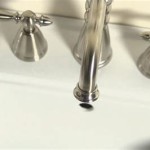How To Install Marble Bathroom Countertops
Marble countertops offer a sophisticated and luxurious aesthetic to any bathroom. Their natural veining and smooth surface contribute to a timeless elegance that can significantly enhance the value of a home. While professional installation is always recommended for optimal results, understanding the process involved in installing marble bathroom countertops can be beneficial for homeowners considering this upgrade. This article provides a comprehensive overview of the steps involved in a typical marble countertop installation, from initial preparation to final sealing.
Installing marble countertops is a project that requires careful planning, precision, and some degree of skill. It is not a simple DIY task and should be approached with caution. If you lack experience in plumbing, carpentry, or working with stone, it is strongly advised to hire a qualified professional. Mishandling marble can lead to damage, costly repairs, or even personal injury. This guide is for informational purposes only and should not be considered a substitute for professional expertise.
Preparation and Assessment
The first crucial step in installing marble countertops is thorough preparation and assessment of the existing bathroom space. This involves several key tasks that ensure the installation process proceeds smoothly and efficiently.
First, accurately measure the existing countertop space. This measurement should be taken multiple times and verified to ensure accuracy. Precise measurements are essential for ordering the correct size of marble slabs. Consider any overhangs, backsplash requirements, and the placement of sinks or faucets. A detailed diagram or blueprint of the countertop layout is highly recommended.
Next, inspect the existing cabinet base or vanity for stability and levelness. Marble is a heavy material, and the supporting structure must be robust enough to bear its weight. Use a level to check the surface of the cabinet. If the cabinet is not level, shims should be used to correct any imbalances. An unstable or unlevel base will lead to problems with the countertop installation, potentially causing cracks, shifting, or other structural issues over time.
Carefully disconnect and remove the existing countertop, sink, and faucet. Turn off the water supply to the sink before disconnecting any plumbing. Take precautions to avoid damaging the plumbing connections or the surrounding walls. Protect the floor with drop cloths or protective sheeting to prevent scratches or stains during the removal process. Dispose of the old countertop properly, following local regulations for construction waste.
Ensure the bathroom area is clean and free of debris. Dust, dirt, and loose particles can interfere with the adhesion of adhesives and sealants, compromising the integrity of the installation. Wipe down the cabinet base with a damp cloth to remove any remaining residue. Good surface preparation is critical for a successful installation.
Marble Countertop Installation
With the preparation phase complete, the next step is to install the marble countertop. This stage demands precision and careful handling of the marble slabs to prevent damage.
Before installing the marble, dry-fit the countertop on the cabinet base. This allows you to check the fit and alignment of the marble without permanently attaching it. Make any necessary adjustments at this stage. If the countertop doesn't fit perfectly, carefully trim it using a wet saw specifically designed for cutting stone. This is a delicate process that requires patience and expertise. Using the wrong tools or techniques can result in chipping, cracking, or an uneven cut.
Apply a bead of silicone adhesive around the perimeter of the cabinet base where the countertop will rest. Silicone adhesive provides a strong bond between the marble and the cabinet, preventing the countertop from shifting or moving. Ensure the adhesive is evenly distributed for consistent contact. The type of adhesive used should be specifically designed for natural stone to prevent staining or discoloration of the marble.
Carefully lift the marble countertop and place it onto the cabinet base, aligning it with the previously marked positions. Gently press down on the countertop to ensure it makes full contact with the adhesive. Use a level to verify that the countertop is perfectly level. If necessary, insert shims between the countertop and the cabinet base to make minor adjustments. Do not force the countertop into place, as this could damage the marble.
Once the countertop is in place and leveled, allow the adhesive to cure according to the manufacturer's instructions. This usually takes several hours, during which time the countertop should not be disturbed. Refer to the adhesive product's specifications for exact drying times. Premature use of the countertop before the adhesive has fully cured can compromise the bond and lead to future problems.
If the countertop consists of multiple sections, ensure that the seams are properly aligned. Use color-matched epoxy to fill the seams and create a seamless appearance. Smooth the epoxy with a putty knife and remove any excess. Allow the epoxy to cure completely before proceeding to the next step.
Sink and Faucet Installation
Installing the sink and faucet is a crucial part of the countertop installation process. This involves precise cutting, proper sealing, and careful plumbing connections.
If the marble countertop does not come with pre-cut holes for the sink and faucet, you will need to cut them using a diamond core drill bit and a wet saw. Mark the exact location of the holes based on the sink and faucet specifications. Cutting marble requires precision and specialized tools to avoid chipping or cracking the stone. It is generally recommended to have this step done by a professional with experience in working with marble.
Before installing the sink, apply a bead of silicone caulk around the perimeter of the sink cutout on the underside of the countertop. This will create a watertight seal and prevent water from seeping between the sink and the marble. The caulk should be specifically formulated for use with natural stone to prevent staining or discoloration.
Carefully lower the sink into the cutout, ensuring it is properly aligned. Secure the sink in place using mounting clips or brackets, following the manufacturer's instructions. Tighten the clips evenly to distribute the pressure and prevent warping or damage to the sink or countertop. Wipe away any excess caulk with a damp cloth.
Install the faucet according to the manufacturer's instructions. Connect the water supply lines to the faucet, ensuring the connections are tight and leak-proof. Turn on the water supply slowly and check for any leaks. If leaks are detected, tighten the connections or replace the fittings as necessary.
Install the drain assembly and connect it to the drainpipe. Ensure all connections are properly sealed to prevent leaks. Run water into the sink to test the drain and check for any leaks. If leaks are detected, tighten the connections or apply plumber's putty to seal any gaps.
Sealing and Finishing
Sealing the marble countertop is essential to protect it from stains, scratches, and water damage. Marble is a porous material and can easily absorb liquids, leading to unsightly stains. Proper sealing helps to maintain the beauty and longevity of the countertop.
Clean the entire marble surface thoroughly with a pH-neutral cleaner specifically designed for natural stone. Remove any dust, dirt, or residue that may interfere with the sealant's ability to penetrate the stone. Allow the countertop to dry completely before applying the sealant.
Apply a high-quality marble sealant to the countertop, following the manufacturer's instructions. The sealant should be applied evenly and allowed to penetrate the stone for the recommended amount of time. Use a clean cloth or sponge to wipe away any excess sealant. It is important to use a sealant specifically formulated for marble to avoid damaging the stone's surface.
Allow the sealant to cure completely before using the countertop. The curing time varies depending on the type of sealant used. Refer to the manufacturer's instructions for specific drying times. Avoid placing any heavy objects on the countertop or exposing it to water or other liquids until the sealant has fully cured.
Apply multiple coats of sealant for added protection. Follow the manufacturer's instructions for the number of coats and the application intervals. Regular resealing is recommended to maintain the countertop's protection and appearance. The frequency of resealing depends on the level of use and exposure to liquids. A general guideline is to reseal the countertop every 6-12 months.
Once the sealant has cured, polish the countertop with a soft cloth to enhance its shine. Regular cleaning with a pH-neutral cleaner and polishing will help to keep the marble countertop looking its best for years to come.

How To Install Marble Countertops In A Bathroom Step By

How To Install A Bathroom Countertop Pkb Cabinetry

How To Marble Countertop Turn Laminate Countertops Into Lifewithqueenii

Bathroom Vanity Cultured Marble Top

How To Replace A Bathroom Countertop Homeadvisor

How To Install Corian Solid Surface Vanity Tops Solidsurface Com Blog

The Pros And Cons Of Marble Countertops Countertop Guides

Marble Contact Paper Countertop 10 Months Later Anika S Diy Life

New Marble Countertops For Bathroom Vanities

Transforming Bathroom Sink Diy With Marble Contact Paper
Related Posts







